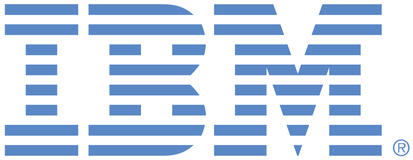Note: This proposal for IBM i addresses the exact same core issue of lacking a free tier for accessibility, education, and community growth as outlined for AIX in idea AIX-I-802: https://ideas.ibm.com/ideas/AIX-I-802. Both platforms suffer from the same fundamental barrier.
Problem Description:
The IBM i operating system (often still referred to by its historical name, AS/400) is renowned for its robustness, integration, and security, powering critical business applications worldwide. However, similar to other IBM Power Systems platforms, its accessibility is severely limited by the high costs of dedicated hardware and software licensing. This effectively restricts its use primarily to established enterprises with significant IT budgets.
This situation creates several challenges:
- Limited Ecosystem Growth and Modernization: Access is confined mainly to professionals within organizations already using IBM i. This hinders the influx of new ideas and slows the adoption of modern development practices on the platform, as a wider community of developers (especially those skilled in newer languages) and administrators cannot easily engage with it.
- Significant Barriers to Learning and Exploration: Individuals outside these existing customer organizations – including independent developers, system administrators exploring new platforms, technology enthusiasts, and critically, students and IT newcomers – have almost no practical way to learn IBM i. Exploring its unique architecture, integrated database (Db2 for i), and distinct operating environment is impossible without access to costly infrastructure.
- Acute Talent Pipeline Challenges: The IBM i platform faces a well-documented challenge regarding an aging skilled workforce. As experienced professionals retire, attracting and training the next generation is crucial. Our experiences lecturing university students (e.g., at Wrocław University of Science and Technology) confirm their interest in diverse technologies, but the complete lack of hands-on access to IBM i makes it impossible for them to gain practical skills and consider it a viable career path.
- Difficulty in Platform Advocacy and Demonstration: Even passionate advocates for IBM i struggle to showcase its strengths (reliability, security, total cost of ownership, integrated nature) to potential new users, developers, or management because they cannot readily provide access to a live environment for demonstration or experimentation.
Proposed Solution:
I propose the creation and provision of a free access tier (Free Tier) for the IBM i operating system. This access could be implemented through providing resource-limited Logical Partitions (LPARs) on IBM Cloud.
The key is that this free tier must offer minimal but sufficient resources (e.g., a fraction of a processor core, modest RAM, and disk allocation) to allow for fundamental learning: navigating the OS, using basic CL commands, running simple SQL queries against Db2 for i, perhaps trying out basic RPG or even introductory development with modern languages like Python or Node.js available on the platform, and exploring its integrated features. Implementation via IBM Cloud is the preferred route due to control, scalability, and cross-promotional benefits.
Justification and Benefits:
Introducing free access to IBM i would yield substantial benefits for the community, the platform's future, and IBM:
Enabling Education: It would finally allow students, educators, independent learners, and curious IT professionals to gain hands-on experience with IBM i, fostering a new generation of skilled individuals.
Strengthening and Modernizing the Ecosystem: Wider access would encourage developers familiar with modern tools and languages to explore IBM i, potentially leading to new applications, open-source contributions, and bridging the gap between traditional and modern development paradigms on the platform.
Enhancing the IBM Brand and Combating "Legacy" Perceptions: Offering free access would powerfully counter the perception of IBM i as inaccessible or purely "legacy." It would showcase IBM's commitment to the platform's future, innovation, and supporting the wider tech community, building significant goodwill.
Promoting the IBM Cloud Platform: Hosting the IBM i free tier on IBM Cloud would be a compelling marketing driver for the cloud platform itself. It would attract a dedicated, business-focused user segment to IBM Cloud, providing them direct experience with its interface and capabilities, potentially leading to adoption of other cloud services.
Generating Future Customers and Usage (Lead Generation): Individuals learning IBM i on the free tier are likely to become future proponents within organizations. Exposure to IBM Cloud during this learning phase makes it the natural choice when they or their employers need commercial IBM i hosting or other enterprise cloud services.
Increasing Competitiveness and Mindshare: In a world where developers and students have free access to countless other platforms, providing an entry point to IBM i is essential to keep it relevant and competitive for future workloads and talent acquisition.
